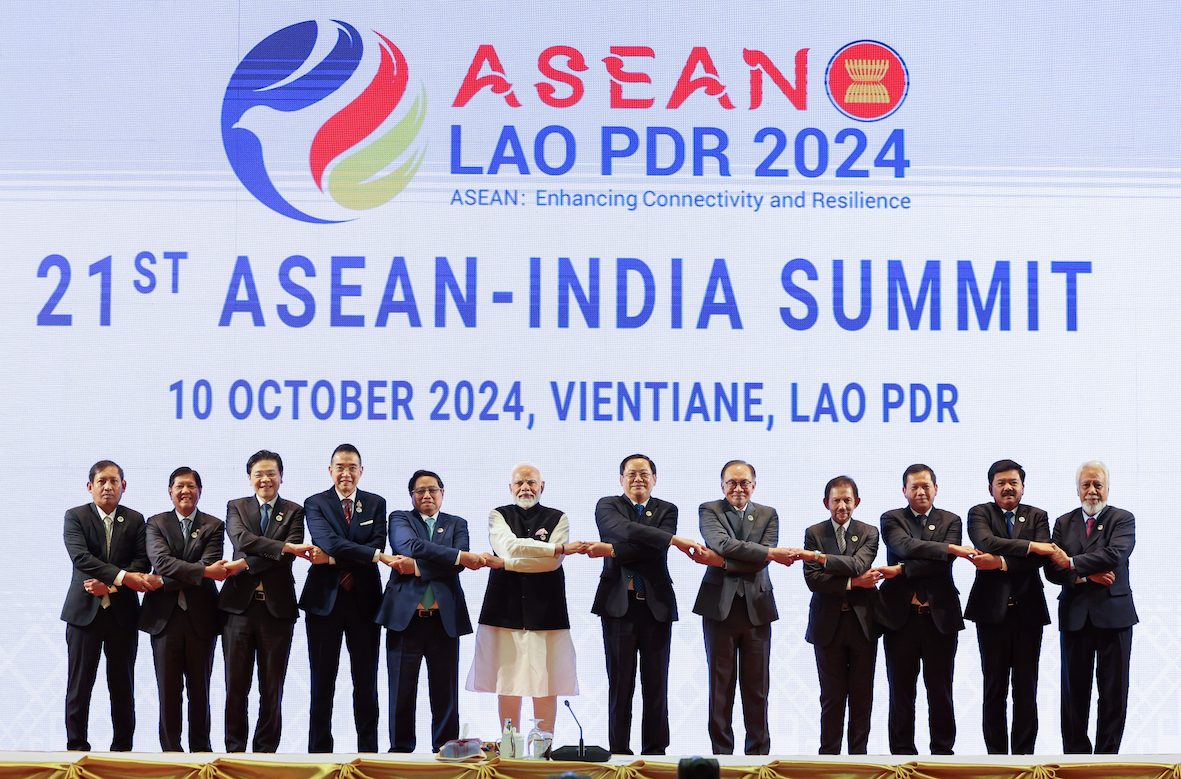The current dispute between India and Canada comes at a particularly inopportune moment for both; as global uncertainties intensify, the necessity for strong alliances becomes paramount. In an era when India’s influence is expanding and geopolitical instability demands friends rather than foes, fostering constructive relationships is more crucial than ever.
Underscoring this strategic pivot, Prime Minister Narendra Modi’s recent participation in the East Asia Summit and bilateral engagements with Singapore, Brunei and Laos highlight the country’s deepening ties with Southeast Asia, signalling a decisive move to strengthen regional bonds and enhance its global standing.
India’s relationship with Southeast Asia, rooted in historical and cultural exchanges, has evolved over centuries. The spread of Hinduism and Buddhism from India across the region laid the early foundations of this connection. The complex links between the Indian Chola Empire — a dominant South Indian dynasty from the ninth to the thirteenth century known for its naval prowess and extensive trade networks — and the Southeast Asian Srivijaya Empire — a powerful maritime and commercial kingdom that flourished from the seventh to the thirteenth century in present-day Indonesia and Malaysia — further strengthened ties through trade, diplomacy and cultural exchange. Additionally, the shared experiences of colonialism and the Cold War have contributed to the creation of a resilient and enduring relationship between India and Southeast Asia.
Meanwhile, the Indo-Pacific region’s growing importance as a vital nexus for global maritime trade has further intensified India’s regional engagement. As China’s growing influence and expansionist bent challenge regional stability, India’s deepening partnerships with Southeast Asian nations now create an opportunity for the formation of a new security architecture — one that could be crucial for maintaining a balanced and multipolar Indo-Pacific landscape.
CIGI’s Global Economic Scenarios program is currently exploring the scenarios of evolving global order, including the possible development of new security and economic regional blocs — for example, the India-Southeast Asian nexus — and seeks to analyze how such novel arrangements may impact international affairs in the years ahead.
It’s important to note, as a starting point, that China’s influence in the Indo-Pacific has expanded significantly through a combination of economic, military and diplomatic strategies. Economically, the Belt and Road Initiative has led to substantial investments in Southeast Asia, strengthening Beijing’s economic foothold and creating dependencies.
Militarily, China has intensified its presence by progressively militarizing the South China Sea by building artificial islands and asserting control over vital maritime routes. Diplomatically, Beijing already wields considerable influence over the members of the Association of Southeast Asian Nations (ASEAN), by leveraging economic ties and employing strategic diplomacy — for example, using economic incentives to sway regional policies in its favour. This influence has allowed China to reshape regional dynamics and challenge the existing balance of power in the Western Pacific, dominated since 1945 by the United States.
India’s rising stature on the global chessboard makes it a pivotal player in the Indo-Pacific. Through strategic initiatives aimed at enhancing regional stability and security, the country is seeking to consolidate its interests. The “Act East Policy” reflects its commitment to deepening economic and security ties with Southeast Asian nations. By emphasizing the importance of freedom of navigation and expanding its naval capabilities, India is protecting vital maritime routes. Additionally, its active engagement in strategic partnerships, such as the Quadrilateral Security Dialogue, and its deepening of bilateral defence relations with key Southeast Asian countries such as Singapore and Vietnam have reinforced its position as a key player in the region.
Much is at stake: Southeast Asia’s strategic location adjoining critical sea lanes, which facilitate a significant portion of global trade, makes it crucial for regional security. ASEAN serves as the central platform for fostering cooperation and addressing common challenges among member states. However, the region’s economic dependencies on major powers and unresolved territorial disputes pose significant threats to stability.
India and Southeast Asian nations over the years have formed and deepened security partnerships through joint military exercises — such as SIMBEX, the Singapore-India Maritime Bilateral Exercise — and various bilateral defence agreements that have focused on the sale of crucial weapons platforms — such as the sale of Indian BrahMos supersonic missiles to the Philippines, and potentially to Vietnam as well. While these collaborations demonstrate a mutual commitment to regional security, their scope remains limited. There is therefore a pressing need for deeper strategic engagement to effectively address shared challenges. Enhancing these partnerships would strengthen collective security efforts and contribute to a more balanced power dynamic in the Indo-Pacific region.
To elevate the partnerships between India and Southeast Asian nations, several strategic initiatives are likely to be explored. Enhancing maritime cooperation by increasing the frequency of joint naval exercises, patrolling of the high seas and intelligence sharing remains crucial. Sharing access to naval assets such as ports and conducting joint military training programs between the land and special forces can further build capacity and foster military interoperability. Economic and technological collaboration, such as investment in regional infrastructure and joint defence technology, could be encouraged. Active diplomatic engagement in multilateral fora, particularly ASEAN-led mechanisms, and efforts to promote a rules-based regional order and facilitate collective responses to challenges could be fostered.
Yet major obstacles to deepening India-Southeast Asia security partnerships exist. China’s significant economic leverage with Southeast Asian countries such as Laos, Cambodia and Indonesia makes it challenging for them to shift alliances without economic repercussions. Internal political issues also play a role; navigating the diverse domestic politics of these nations often complicates collaborative efforts.
Nonetheless, the imperative to strengthen security partnerships between India and Southeast Asian nations cannot be overstated. Such a security bloc would serve as a unifying force, fostering closer cooperation and coordination among member states.
By collaboratively addressing shared challenges and reinforcing collective security, these nations can envision a future where the region remains balanced, with all nations respecting sovereignty and adhering to international law. The formation of an Indo-Southeast Asian security bloc would be a monumental task requiring policy makers to navigate a treacherous landscape of national interests and geopolitical dynamics. All the more reason, then, to heal the current frayed relationship between India and Canada with all possible haste. The global stakes, for both, are greater than their bilateral tensions.



